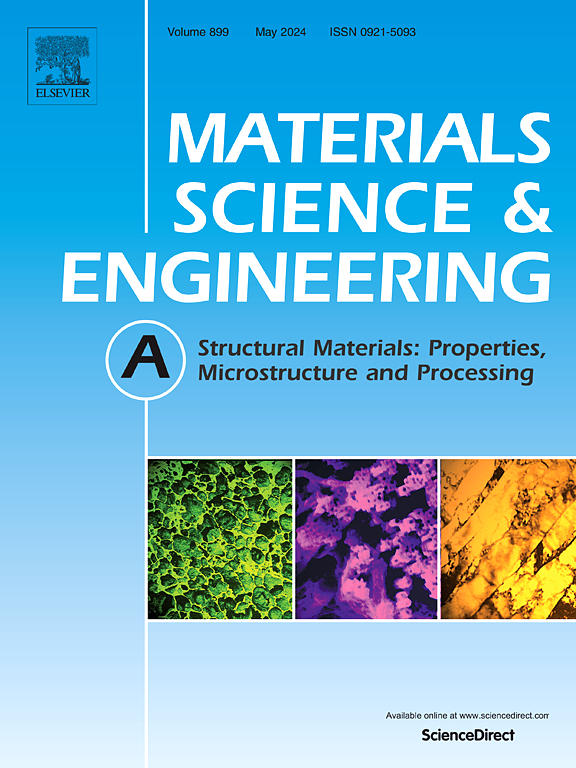Strength-elongation synergy via controlled precipitation hardening in counter pressure cast Al-7Si-0.35 Mg casting alloy with T5 heat treatment
IF 6.1
2区 材料科学
Q1 MATERIALS SCIENCE, MULTIDISCIPLINARY
引用次数: 0
Abstract
Al–7Si–0.35 Mg (A356) is a promising alloy for automotive components and is conventionally strengthened via T6 heat treatment (solution treatment followed by artificial aging). However, solid solution treatment involves high operating costs and introduces casting distortions. Consequently, T5 heat treatment (direct aging after casting) has garnered attention despite its typically lower strength and ductility compared to T6. In this study, we systematically investigated the aging response of a counter pressure cast A356 alloy under various T5 conditions to optimize the trade-off between tensile strength and elongation. Transmission electron microscopy was employed to identify the precipitate phases formed during different T5 treatments and to quantify their size and number density. The results show that increasing the aging temperature from 160 to 210 °C coarsens the precipitates and decreases their number density and coherency, which in turn markedly reduces alloy elongation. This decrease in ductility stems from a deformation mechanism dominated by dislocation bypass of coarse precipitates formed at 210 °C, causing high dislocation densities and localized stress concentrations that initiate micro-cracking. Our findings suggest that the optimal balance between tensile strength and elongation is achieved at 190 °C, where a high number density of fine coherent (β″) precipitates and a small number density of semi-coherent (U2 and B′) precipitates are present. In this case, precipitation shearing becomes the primary deformation mechanism, resulting in moderate dislocation density and a favorable strength-elongation synergy.
T5热处理反压铸造Al-7Si-0.35 Mg铸造合金控制析出硬化的强度-伸长率协同效应
Al-7Si-0.35 Mg (A356)是一种很有前途的汽车零部件合金,通常通过T6热处理(固溶后人工时效)进行强化。然而,固溶处理涉及高操作成本和引入铸件变形。因此,T5热处理(铸造后直接时效)引起了人们的关注,尽管它的强度和延展性通常低于T6。在这项研究中,我们系统地研究了反压铸造A356合金在不同T5条件下的时效响应,以优化抗拉强度和伸长率之间的权衡。采用透射电镜对不同T5处理形成的析出相进行了鉴定,并量化了其大小和数量密度。结果表明:当时效温度从160℃提高到210℃时,析出相粗化,析出相的数量密度和一致性降低,从而显著降低合金伸长率;这种延性的下降源于210°C时形成的粗相的位错旁路主导的变形机制,导致高位错密度和局部应力集中,从而引发微裂纹。我们的研究结果表明,在190°C时,拉伸强度和伸长率之间达到最佳平衡,此时存在大量密度较高的细共晶(β″)相和少量密度较高的半共晶(U2和B′)相。在这种情况下,析出剪切成为主要的变形机制,导致了适中的位错密度和良好的强度-延伸协同效应。
本文章由计算机程序翻译,如有差异,请以英文原文为准。
求助全文
约1分钟内获得全文
求助全文
来源期刊

Materials Science and Engineering: A
工程技术-材料科学:综合
CiteScore
11.50
自引率
15.60%
发文量
1811
审稿时长
31 days
期刊介绍:
Materials Science and Engineering A provides an international medium for the publication of theoretical and experimental studies related to the load-bearing capacity of materials as influenced by their basic properties, processing history, microstructure and operating environment. Appropriate submissions to Materials Science and Engineering A should include scientific and/or engineering factors which affect the microstructure - strength relationships of materials and report the changes to mechanical behavior.
 求助内容:
求助内容: 应助结果提醒方式:
应助结果提醒方式:


